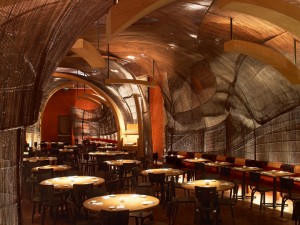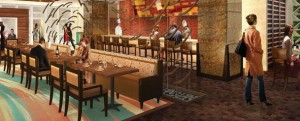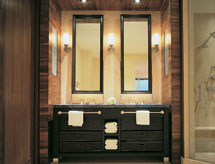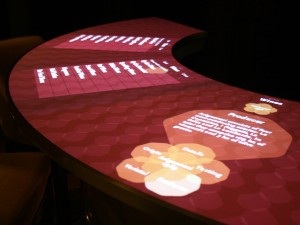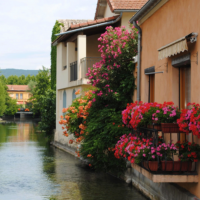David Rockwell, founder of the Rockwell Group, an architecture and design form specializing in cultural, hospitality, retail, theater, and product design, and this year’s National Design Award winner in Interior design. Rockwell is best known for crafting unique narratives and immersive environments. His works range from the W Hotels, Kodiak Theater, Adour Alaian Ducasse and Nobu restaurants. Currently he is working on Canyon Ranch Miami and just opened the Nobu Dubai.
D.C.-You have what seems to be an infinite amount of creativity and ideas, How do you get inspired?
New challenges. Any design…really what I love is invention and I am probably most interested in projects that have some communal aspect. My design practice is a great communal process. We’re nontraditional in the sense that we don’t believe in boundaries between architecture, interior design, theater, product design; it’s all part of the same endeavor and it all starts out very collaborative. The thing that always gets me going is – we just agreed to do the set design for the Oscars this year- What get me going about that is that it’s thrilling and scary all at the same time.
D.C.- Are you the designer that goes to the supplier and forces the issues with innovative sources, finishes? How do you keep abreast? We actually have a lab that focuses only on innovation in both technology and handcraftsmanship. We are at the center in finding artisans and craftsman and that’s built into and an integral part of our process.
D.C.- I am interested in your comments about secret narratives in design- can you explain or talk to me about that. How do you design a narrative? Design a story?
D.C.- So how do you design that narrative? How do you take an idea and POV and translate it into products or finishes?
OK, Let’s take Canyon Ranch Miami that is going to open up in a couple of weeks. That’s a case where I knew Canyon Ranch really well and I knew Mel Zuckerman and I spent a lot of time out there with my team and we started to think about in designing a living environment for Canyon Ranch where we would focus a disproportionate amount of our design efforts on those areas where you would be singularly changing your lifestyle. So, what do I mean by that? Well, in the rooms you walk into the kitchen with open shelving with all their herbal teas sitting right in front of you. It makes you rethink how you’ll use the kitchen right off the bat. In the spa, the juice bar which is the most social aspect with all the classes you’re going to take is very visible. We also over time evolved a story about someone who was looking for a healthy lifestyle in this very vertical and dense structure. (Unlike Tucson or the Berkshires which are low rise; these are high rises and they are quite dense.) We created a banyan tree and agate sculptural wall that cuts thru all of the public spaces; it’s almost like a host. So when you’re in a place were you’re changing habits by having this host wall that you recognize everywhere it gives you a sense of comfort and orientation.
Well, I think people know more about design now; there is a higher level of design intelligence. There is less ability to amaze people just with a new service. You have to go deeper than that. The greatest luxury we now have is regaining time so in hospitality we create places that allow you to enjoy being with each other.
When Nobu opened 15 years ago, there were not a lot of 3 star restaurants that didn’t have tablecloths. It signaled a new way to think about luxury. We just did Alain Ducasses’ restaurant at the St. Regis – very high end luxury; however it’s also accessible. It’s not alienating. We’re in this global moment where we are so connect virtually; so that real time connections- restaurants, hotels, places to get together and socialize have more importance.



